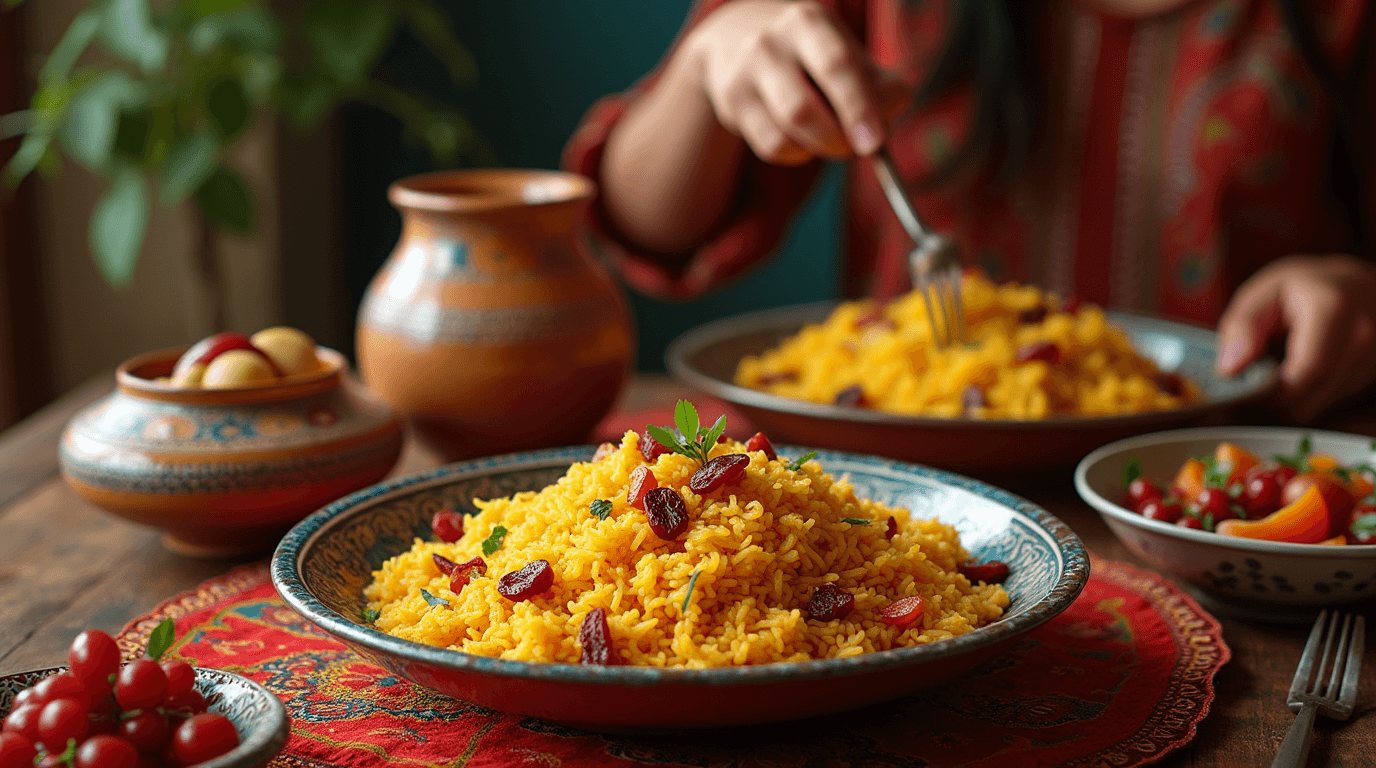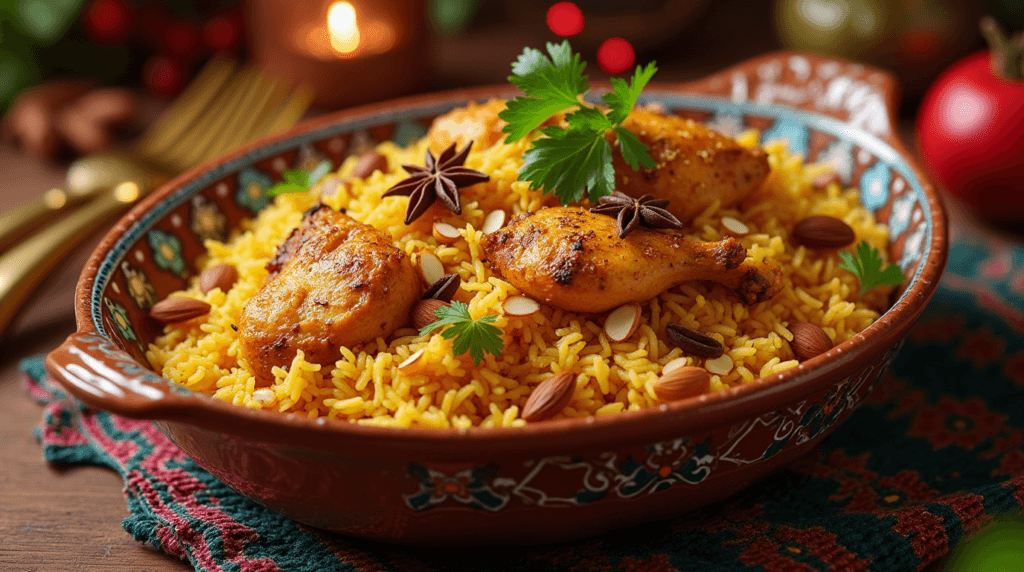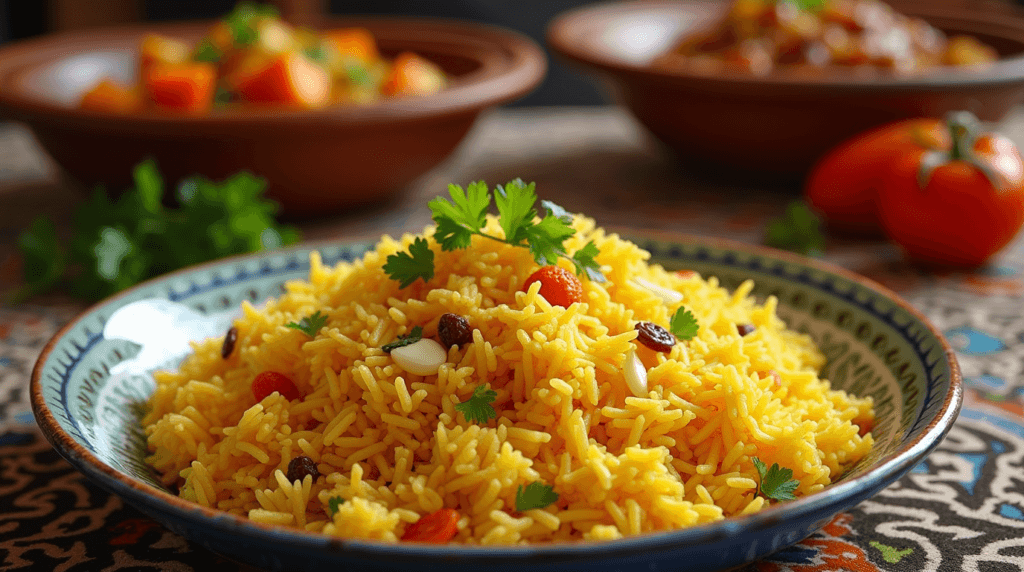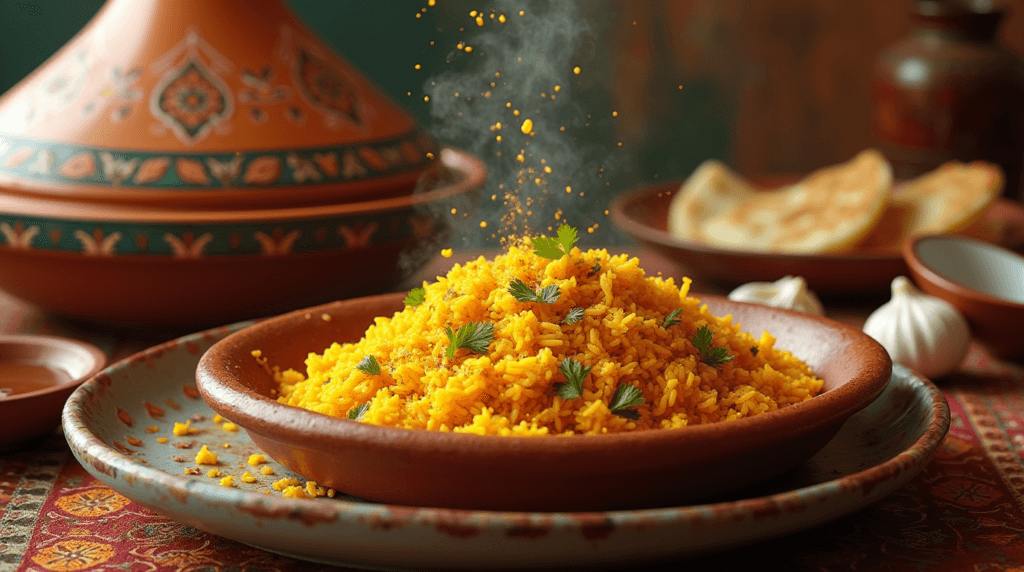Our Location
304 North Cardinal St.
Dorchester Center, MA 02124

Imagine the warm, rich aroma of saffron-infused rice filling your kitchen, transporting you to the heart of Morocco. You can almost hear the bustling souks, see the colorful spices piled high, and taste the depth of tradition in every bite. Moroccan rice dishes are a vibrant blend of textures and flavors, steeped in history and a testament to the country’s culinary artistry.
If you’ve ever wanted to master these dishes, you’re in the right place. In this guide, you’ll learn how to create Moroccan rice dishes that are not only authentic but also easy to make in your own kitchen. With just three simple steps, you can unlock the secrets to these mouthwatering meals. So, let’s embark on this flavorful journey together!
The beauty of Moroccan rice dishes lies in their balance of simplicity and complexity. While rice may seem like a basic ingredient, it takes on a whole new character when combined with the right spices and cooking techniques.
Moroccan cuisine is a melting pot of flavors, drawing from Berber, Arab, and Mediterranean influences. This fusion is what makes Moroccan rice dishes stand out. The combination of spices, meats, vegetables, and dried fruits creates a harmonious mix of savory, sweet, and spicy elements. Understanding the cultural significance of these ingredients will give you a deeper appreciation of the dish and help you execute it with authenticity.
Let’s take a look at the main ingredients that make Moroccan rice dishes so flavorful:
The cooking methods you use can drastically impact the flavor and texture of your Moroccan rice dishes. Some of the most common techniques include:
By understanding these foundational elements, you’re ready to move on to mastering the techniques that will take your Moroccan rice dishes to the next level.
The key to perfecting any rice dish is ensuring the rice is cooked to perfection. Here are some essential techniques to keep in mind:
One of the most important aspects of Moroccan rice dishes is layering the flavors. Here’s how you can achieve that perfect blend:
By following this method, you’ll ensure that every bite of your Moroccan rice dish is packed with layers of delicious flavor.
Now that you’ve learned the foundation and the techniques, it’s time to dive into the heart of Moroccan rice dishes. These dishes are full of variety, so there’s something for everyone. Here are some of the most popular Moroccan rice dishes to try:
A classic dish, Moroccan pilaf is made with basmati rice, tender meat (usually chicken or lamb), vegetables, and a mix of spices. Dried fruits like raisins or apricots are often added to balance the savory flavors with a hint of sweetness. This dish is perfect for a special occasion or a family meal.

Although biryani is often associated with Indian cuisine, Moroccan-style biryani features saffron, turmeric, and a generous amount of spices, along with marinated chicken. The rice is fluffy and infused with aromatic flavors, making each bite a comforting experience.

For a vegetarian option, a vegetable tagine served with rice is an excellent choice. A mix of seasonal vegetables like carrots, zucchini, and tomatoes are slow-cooked in a tagine with Moroccan spices, and the rice is served alongside to absorb all the delicious flavors.

A seafood rice stew is perfect for those who love the taste of the ocean. Shrimp, fish, and other seafood are cooked in a tomato-based broth, alongside rice and spices. The result is a hearty, flavorful dish that’s perfect for any seafood lover.
To make your Moroccan rice dishes truly exceptional, you’ll need a few key ingredients and tools.
Here’s a quick overview of the essential spices and ingredients used in Moroccan rice dishes:
| Spice | Flavor Profile | Common Uses |
|---|---|---|
| Saffron | Floral, earthy | Adds a rich, aromatic flavor to rice dishes |
| Cumin | Warm, nutty | Enhances the flavor of meats, rice, and stews |
| Cinnamon | Sweet, spicy | Pairs well with rice for both savory and sweet dishes |
| Turmeric | Earthy, bitter | Gives rice a golden color and a mild, earthy flavor |
| Coriander | Citrusy, sweet | Pairs perfectly with cumin in rice and stews |
Mastering Moroccan rice dishes is all about practice. By following the techniques outlined here and experimenting with different variations, you’ll soon be able to create meals that are bursting with flavor and authenticity. Remember, the key is to layer flavors, choose the right spices, and let the rice absorb all the deliciousness.
Call to Action
Now it’s your turn! Head to your kitchen and start experimenting with these Moroccan rice dishes. Whether you’re making a classic pilaf or a seafood rice stew, you’ll be amazed by how easy it is to bring the flavors of Morocco into your home. Don’t forget to share your culinary creations with your friends and family—they’re sure to be impressed by your newfound expertise in Moroccan cuisine!

With this comprehensive guide, you’re ready to take on Moroccan rice dishes with confidence. Keep experimenting and savor every delicious bite!
There are no reviews yet. Be the first one to write one.